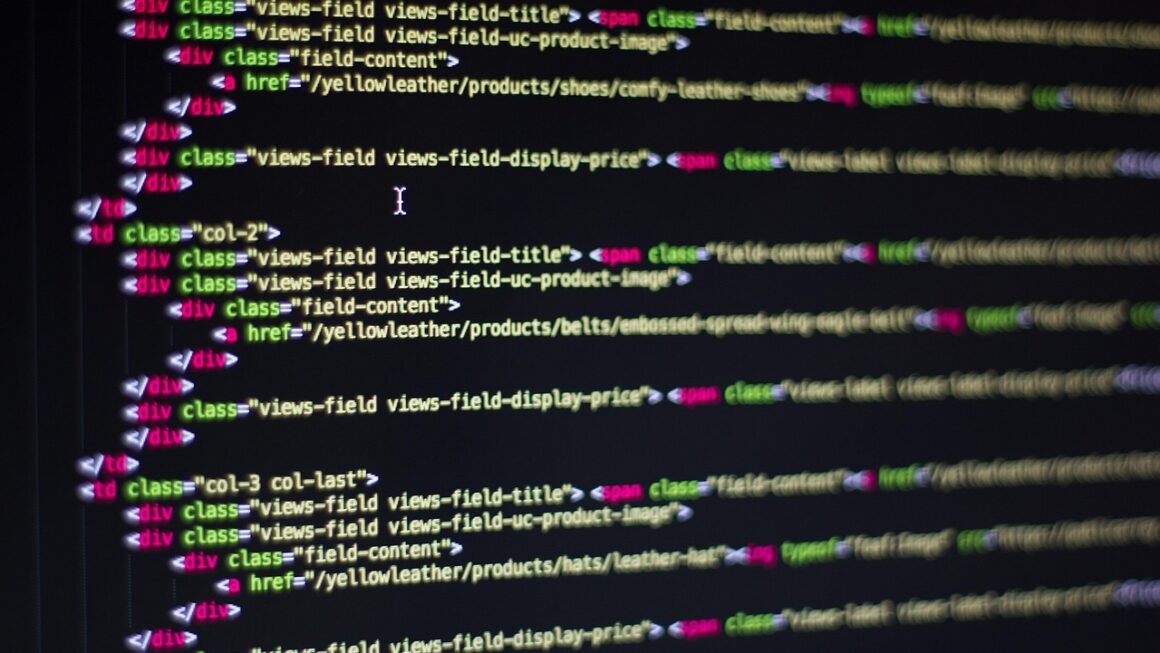The relentless march of software development brings with it an inevitable companion: bugs. These pesky errors can range from minor annoyances to catastrophic system failures. Traditionally, developers have relied on debugging tools, rigorous testing, and their own expertise to hunt down and squash these bugs. However, the landscape is shifting. Artificial intelligence (AI) is emerging as a powerful ally in the fight against software defects, offering the promise of faster, more efficient, and even proactive bug fixing. Let’s delve into the exciting world of AI-powered bug fixing and explore how it’s revolutionizing software development.
The Rise of AI in Software Debugging
AI’s capabilities in pattern recognition, anomaly detection, and code analysis make it exceptionally well-suited for bug fixing. Rather than simply relying on human intuition, AI algorithms can analyze vast amounts of code, test results, and execution logs to identify potential problems and even suggest solutions. This represents a significant leap forward in software quality assurance.
How AI Approaches Bug Fixing
AI-driven bug fixing employs various techniques, including:
- Static Code Analysis: AI algorithms can analyze source code without executing it, identifying potential vulnerabilities, coding errors, and style inconsistencies. This is often done using machine learning models trained on large codebases.
- Dynamic Analysis: By monitoring software execution, AI can detect unexpected behavior, memory leaks, and performance bottlenecks. This approach often involves reinforcement learning to optimize testing strategies.
- Predictive Analysis: AI can analyze historical bug data to predict where new bugs are likely to occur, allowing developers to focus their testing efforts on high-risk areas. This leverages techniques like time series analysis and regression models.
- Automated Patch Generation: Some AI systems can even generate patches automatically, suggesting code modifications to fix identified bugs. This is a more advanced area and often requires careful validation by human developers.
Benefits of Using AI for Bug Fixing
Implementing AI-powered bug fixing offers a multitude of advantages:
- Increased Efficiency: AI can automate many of the tedious and time-consuming aspects of debugging, freeing up developers to focus on more creative and strategic tasks.
- Reduced Costs: By catching bugs earlier in the development cycle, AI can help reduce the costs associated with fixing them later on. The later a bug is found, the more expensive it is to fix.
- Improved Software Quality: AI can help identify and fix bugs that might be missed by human developers, leading to more reliable and robust software.
- Faster Time to Market: By streamlining the debugging process, AI can help accelerate the software development lifecycle, allowing companies to bring their products to market faster.
- Enhanced Developer Productivity: AI tools can provide developers with valuable insights and suggestions, enabling them to write better code and fix bugs more effectively.
AI-Powered Bug Detection Techniques
Effective bug fixing starts with accurate bug detection. AI leverages various techniques to identify anomalies and potential errors within codebases and during runtime.
Static Analysis with Machine Learning
Static analysis tools enhanced by machine learning can go beyond traditional rule-based checks. They learn from vast amounts of code, identifying subtle patterns and correlations that indicate potential bugs.
- Example: A machine learning model trained on a large corpus of Java code might learn that a specific sequence of method calls is often associated with null pointer exceptions. The tool can then flag similar sequences in new code as potential risks.
- Practical Tip: Integrate static analysis tools into your CI/CD pipeline to automatically scan code for potential bugs as it’s being developed.
Dynamic Analysis and Runtime Monitoring
By observing software behavior during runtime, AI can detect anomalies and performance bottlenecks that might indicate bugs.
- Example: An AI system monitoring a web application might notice that certain user actions consistently lead to increased latency. Further investigation could reveal a performance bug in the underlying code.
- Details: This often involves techniques like anomaly detection and time series analysis applied to system logs, performance metrics, and user activity data. Tools can automatically alert developers when unusual behavior is detected.
Fuzzing and Automated Testing
Fuzzing, a technique that involves feeding random or malformed data to a program to trigger unexpected behavior, can be significantly enhanced by AI.
- Example: AI-powered fuzzing can learn which types of inputs are most likely to trigger bugs and focus its efforts on generating those inputs.
- Benefits: This intelligent fuzzing approach can be far more effective than traditional random fuzzing, leading to the discovery of more bugs with less effort. Tools like AFL (American Fuzzy Lop) are being integrated with AI techniques to improve their effectiveness.
Automating Bug Fixing with AI
Beyond bug detection, AI is making inroads into automated bug fixing. While fully autonomous bug fixing is still a developing field, AI can assist developers in significant ways.
Patch Generation and Suggestion
AI models can analyze bug reports and code context to suggest potential patches.
- Example: Deep learning models trained on historical bug fixes can learn to identify patterns and generate code modifications that address similar issues. These models can then suggest patches for new bugs, which developers can review and apply.
- Details: The accuracy and reliability of AI-generated patches vary depending on the complexity of the bug and the quality of the training data. Human review is crucial to ensure that the suggested patches are correct and do not introduce new problems.
Automated Refactoring for Bug Prevention
AI can also assist in automated refactoring, improving code quality and reducing the likelihood of future bugs.
- Example: An AI-powered refactoring tool might identify overly complex functions or duplicated code and suggest ways to simplify or consolidate them.
- Benefits: By proactively improving code quality, automated refactoring can help prevent bugs from being introduced in the first place. It also promotes code maintainability and readability.
Combining AI with Traditional Debugging Tools
AI is not meant to replace traditional debugging tools but rather to augment them. AI-powered features can be integrated into existing IDEs and debuggers to provide developers with additional insights and assistance.
- Example: An IDE might use AI to suggest potential causes for a bug based on the code surrounding the error and the stack trace.
- Practical Tip: Explore AI-powered plugins and extensions for your favorite IDE to enhance your debugging workflow.
Challenges and Future Directions
While AI-powered bug fixing holds great promise, there are also challenges to overcome.
Data Requirements and Training
AI models require large amounts of data to train effectively. Gathering and preparing this data can be a significant undertaking.
- Challenge: Access to high-quality, labeled bug data can be limited, particularly for proprietary software.
- Solution: Explore techniques like transfer learning and synthetic data generation to overcome data scarcity.
Explainability and Trust
It can be difficult to understand how AI models arrive at their conclusions, making it challenging to trust their recommendations.
- Challenge: Developers may be hesitant to apply AI-generated patches if they don’t understand the reasoning behind them.
- Solution: Develop AI models that provide explanations for their decisions and allow developers to inspect the reasoning process. Explainable AI (XAI) is a critical area of research in this context.
Scalability and Complexity
Applying AI to large and complex software systems can be computationally intensive.
- Challenge: Scaling AI-powered bug fixing to handle massive codebases and complex software architectures can be a challenge.
- Solution: Optimize AI algorithms for performance and explore distributed computing techniques to handle large datasets.
The Future of AI in Bug Fixing
The future of AI in bug fixing is bright. As AI technology continues to advance, we can expect to see:
- More sophisticated AI models that can detect and fix a wider range of bugs.
- Increased automation of the bug fixing process, reducing the need for human intervention.
- AI-powered tools that can proactively prevent bugs from being introduced in the first place.
- Integration of AI into all aspects of the software development lifecycle, from design to deployment.
Conclusion
AI is rapidly transforming the landscape of software debugging, offering the potential to significantly improve software quality, reduce development costs, and accelerate time to market. While challenges remain, the benefits of AI-powered bug fixing are undeniable. As AI technology continues to evolve, it promises to become an indispensable tool for software developers, helping them build more reliable, robust, and secure software. Embracing AI in bug fixing is no longer a futuristic fantasy but a strategic imperative for any organization striving to deliver high-quality software in today’s competitive environment.




